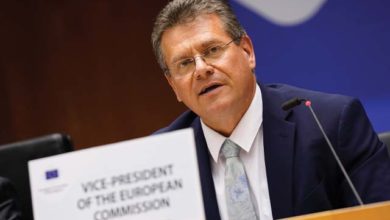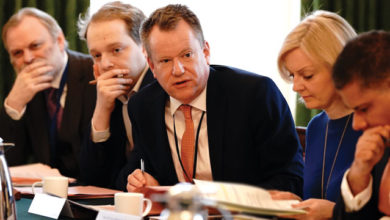Brexit: What next?
 Attractive as it might be in terms of access to the Single Market, the EEA option is by no means the obvious answer to the ‘what next’ of Brexit, writes Professor of European Politics at Queen’s University Belfast, David Phinnemore.
Attractive as it might be in terms of access to the Single Market, the EEA option is by no means the obvious answer to the ‘what next’ of Brexit, writes Professor of European Politics at Queen’s University Belfast, David Phinnemore.
As the United Kingdom heads towards leaving the European Union (EU) following the referendum on 23 June, a key unanswered question is ‘what next’ for trade? The absence either of a government ‘Plan B’ or any clear proposals from the Leave campaign for a new post-withdrawal UK-EU relationship means that consideration is being given to a variety of options, none of which appears to set to gain universal support.
Among the options is for the UK to participate in the European Economic Area (EEA), the arrangement on which EU relations with Norway, Iceland and Liechtenstein is based. To do this, the UK would also need to re-join the European Free Trade Association (EFTA).
The attraction of the EEA, which has been in existence since January 1994, is that it provides participating states with unhindered access to the EU’s Single Market, a key concern of businesses contemplating Brexit. Participation in the EEA is currently restricted to EU and EFTA member states, although not all EFTA members participate. Switzerland, EFTA’s fourth member state, opted not to join the EEA and instead has its own complex and cumbersome set of bilateral agreements with the EU.
The essence of the EEA is that it involves non-member states subscribing to and upholding the four freedoms on which the EU’s Single Market is based: the free movement of goods, services, capital and persons. In exchange they enjoy the same rights of access to the Single Market as EU member states. Subject to EU rules, industrial and manufactured goods are therefore traded freely as are services with individuals and companies enjoying the same rights of establishment and access to public procurement contracts as counterparts in the EU. Capital moves freely as well.
As regards the free movement of persons, citizens of Norway, Iceland and Liechtenstein enjoy the same rights as EU nationals to live, work, establish business and study throughout the EEA’s 31 current member states. Although the three EFTA participants in the EEA are also part of the EU’s Schengen area of passport-free movement of people, Schengen membership is not actually part of the EEA. States can be members of the EEA without being part of Schengen. There is also no obligation at all to sign up to the euro or participate in eurozone-based integration initiatives.
If the UK were to join the EEA therefore, it would essentially retain the same access to the Single Market as it currently enjoys. It would also remain outside of Schengen and of course the euro. The disruption to trade with existing EU partners and economic activity generally would be kept to a minimum.
Participation in the EEA is not simply a matter, however, of committing to uphold the four freedoms of the Single Market. It comes with obligations, and extensive ones. Participating states must adopt existing and future EU legislation relating to the four freedoms as well as in the areas of the so-called flanking policies. This involves almost 5000 pieces of EU legislation covering such matters as product specifications and standards, competition, state aids, company law, environmental standards, mutual recognition of qualifications and coordination of social security entitlements.
Moreover, the EEA is a dynamic arrangement. Participating states are obliged to adopt new and amended EU legislation relating to the Single Market and they do so without a formal role in its adoption. They are consulted, not individually but as an EFTA bloc, by the Commission on its proposals. However, legislation is adopted by the EU, normally by its member states in the Council and by the European Parliament. The EFTA states have their own court to rule on disputes and matters of interpretation, but the EFTA Court is expected to rule in line with the jurisprudence of the Court of Justice.
Participating in the EEA would therefore raise serious questions as to how far the UK was actually fulfilling the promise of the Leave campaign to ‘take back control’. EEA membership means automatically signing up to and agreeing to uphold significant amounts of current and future EU legislation; and therefore losing sovereignty. Moreover, if there is a breach, the EU can suspend the application of part or all of the EEA Agreement.
A further drawback of the EEA option for Leave campaigners is that the four freedoms come as a package. Participants in the EEA must adopt the free movement of persons alongside the free movement of goods, services and capital. Therefore, EEA participation would not address the Leave campaigns demand to be able to impose controls on inward migration from the EU. That said, EEA rules do permit Liechtenstein to impose specific restrictions on the free movement of people owing to its small size. So a precedent for restrictions does exist.
For Northern Ireland, the fact that the EEA would preserve much of status quo of EU membership, at least as far as free movement and the Single Market are concerned, should make it an attractive option. Much cross-border trade could continue almost undisrupted. It should be noted, however, that the EEA does not involve participation in the Common Agricultural Policy. The Common Fisheries Policy is also outside the EEA. Therefore, there is no free movement of agricultural goods or fish in the EEA. Instead, the focus is on the progressive liberalisation of agricultural trade and on implementing preferential trade arrangements for certain processed agricultural products. Trade is therefore subject to tariffs and quotas and existing trading arrangements would be disrupted and there would also be a need for customs controls.
There would also need to be customs controls between the UK and the EU to ensure imports originating from third countries and their compliance with EU rules of origin could be monitored. This would not necessarily require particularly intrusive control facilities, for example across the Irish border, and could be modelled on arrangements in place for trade between Norway and the EU, particularly across the border between Norway and Sweden. All the same, a control facility would be needed.
For advocates of the EEA option, the fact that it does not involve participation in the EU’s customs union means that the UK would be free to conclude trade agreements with third countries and the various regional trade blocs that exist.
Participation in the EEA also involves a financial cost. EU non-member states contribute via EEA grants to various ‘cohesion’ initiatives aimed at the less economically prosperous EU member states. They also pay for their involvement in EU programmes. For the UK, the overall cost would, however, be notably less than it currently pays to the EU budget for EU.
For businesses keen on retaining access post-Brexit to an EU market of 435 million people, the EEA is clearly an attractive option and the financial cost to the UK government of EEA participation would be a price worth paying.
The political costs associated with the legislative burden EEA participation cannot be overlooked, however. In significant areas of policy, the UK would be a decision-shaper at best, and not a decision-maker. There is also the question of whether the EEA option really delivers for agriculture and the agri-food sector and it will entail customs controls.





